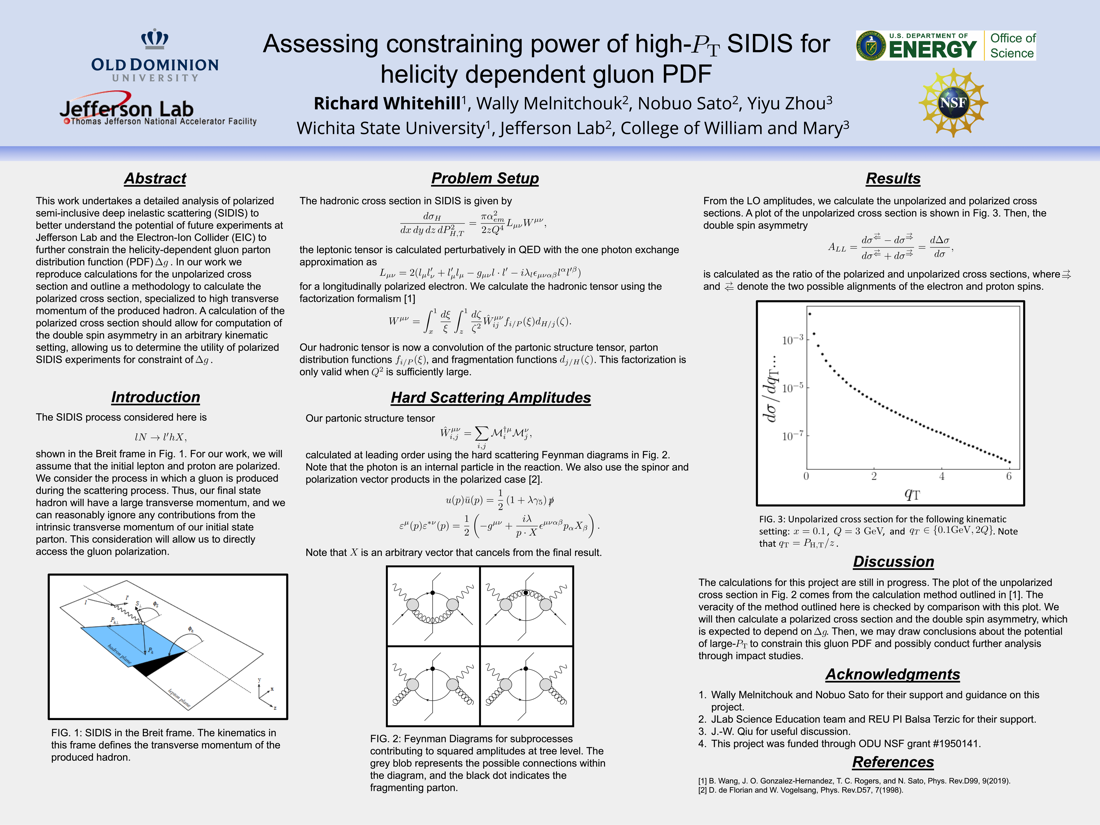Undergraduate Research at Jefferson Lab
Assessing Constraining Power of High-PT SIDIS for Helicity Dependent Gluon PDF
Student: Richard Whitehill
School: Wichita State University
Mentored By: Dr. Wally Melnitchouk
The proton is in a spin crisis. We know from experiment that it has spin-1/2, but the protons constituent quarks and gluons form a complicated substructure. These quarks and gluons are fundamental particles with spin-1/2 and spin-1, respectively. We would expect the proton spin to take on a multitude of values given by angular momentum addition rules. This is not the case, however. In this project, we studied polarized semi-inclusive deep inelastic scattering (SIDIS) to determine whether future experiments at the Electron-Ion Collider have the potential to better constrain the polarized gluon parton distribution function (PDF) at high transverse momentum of the produced hadron. We calculated the double spin asymmetry as a function of transverse momentum in the kinematic regions of interest using the factorization formalism. This allowed us to build up the calculation from the partonic level in order to calculate the hadronic differential cross section. We find that the double spin asymmetry, the ratio of the polarized and unpolarized cross sections, is significant enough at high transverse momentum to warrant further theoretical investigation of polarized SIDIS experiments as a tool to better extrapolate polarized PDFs at high transverse momentum. Our results indicate that impact studies may be useful to further analyze the potential of polarized SIDIS experiments to constrain the helicity-dependent gluon PDF at high transverse momentum.
[Watch the presentation on YouTube]

Citation and linking information
For questions about this page, please contact Education Web Administrator.
